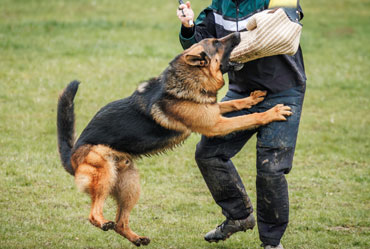
Subsequently the doctor will wash the dog bite wound to ensure there is no dirt or bacteria, and may further debride the wound, that is, remove dead tissues from the wound. An example of the transmitted disease is rabies, which is transmitted through saliva, and in a case where a dog bite breaks the skin, bacterial infection occurs. This leads to problems such as pain, inflammation, and secretion from the sore. If the bacteria are washed off with water, they may not infect the body and the wound may heal. If bacteria remain within the human body they can cause an illness like tetanus, rabies, or sepsis. At times, an infection may extend to the other regions of the body as well. Individuals will require amoxicillin or injections to cure these types of infection.
Inflammation of the skin around the injury site pain lasting not for a day but for more than 24 hours drainage from the wound an impaired ability to move specific limbs or part of the body definitively coating it like a warm layer around the wound.
Signs that the infection may have spread to other parts of the body include:
- fever
- shivering
- night sweats
Treating Dog Bites and The Prevention of An Infection
The following is recommended to make sure that an infection from a dog bite is prevented:
First, the wound should be washed immediately. People can treat minor wounds by: rinsing the wound with soap and warm water then proceed to clean the area of will rigorously lots of rinsing the wound under running water or use of warm water to remove germ’s deposit. poking the burn CLEAN APPLY AN antibiotic cream and THEN covering it up with a piece of a clean bandage People should deal with deeper, more serious wounds by: placing a piece of clean, dry material lightly on the wound in order to control bleeding. Forcing patients to seek medical attention immediately or, seeking help from the emergency services, e.g., by dialing 911 if the bleeding is out of control, or the person feels dizzy.
One must admit that to avoid infection caused by a dog bite people may be able to manage it with the help of home remedies. Topical debridement of small contaminated wounds can usually be managed with simple initial cleaning. But for deeper wounds, people should visit a doctor. After cleaning the wound and the surrounding tissue, a doctor can use water and a cleaning solution using a syringe. This is good because it removes bacteria from the site of the wound through rinsing. The doctor may then prescribe antibiotics that will help the body to counter any bacteria that might have gotten into them. A doctor will also be able to assess the wound to determine whether there are any underlying damaged structures for instance nerves or bones. If the person has no documentation of tetanus immunization in the last five years, he or she may require immunization to prevent tetanus.